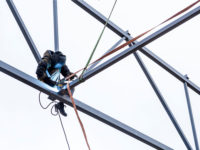 Source: Intelex;
Source: Intelex;
Intelex’s Inspection Pocket Guide
As OSHA’s website states, “The most widely accepted way to identify hazards is to conduct safety and health inspections.” Conducting safety inspections is a routine task that is, at its core, an activity designed to decrease risk across your business. Yet few companies have a safety inspection program in place that adequately identifies and prioritizes risk.
The reality is that risk comes in many forms, and nearly every safety manager can benefit from considering what forms of risk might be missing from their own inspection program.
Risk-based inspections rely on knowing both the probability and consequence of an incident occurring. Armed with this awareness, inspection-related activities can be prioritized according to where the highest levels of risk exist.
What it boils down to is the following:
- Low Probability + Low Consequence = Low Risk
- High Probability + High Consequence = High Risk
Let’s look at a few common high consequences and how to address them in order to mitigate risk.
Review your injuries and incidents
When it comes to consequences, injuries and incidents are clearly high. One way to identify high probability in this instance is to review your injury and incident reports from recent years. If there are recurring themes or root causes (particularly where lost-time or fatal injuries are concerned), consider how you can optimize your inspection program to better address these.
Determine what’s at stake
Falling into noncompliance is another high consequence and can lead to fines, damage to your brand name, and even interruption to operations. In some cases, these consequences can put companies out of business.
For every item on your inspection checklist, ask yourself this question: if a third-party inspector found a nonconformance or hazard here, what would the result be and how much of a negative impact would this have on your business? This determines whether the nonconformance has a low or high associated consequence. Then determine the probability that this will happen. How often do your own inspections identify a nonconformance associated with that checklist item?
Identify inspector priorities
Knowing an inspector’s priorities can also help you to identify risk. For example, OSHA’s Top 10 List can be a valuable tool for companies that want to prepare for an OSHA inspection, because it identifies which violations OSHA inspectors are used to identifying and issuing citations for.
In construction, fall protection is generally the most frequently cited. So risk-based inspections in this industry can focus on fall protection hazards more thoroughly than others, or inspections specifically related to fall protection compliance might be conducted more frequently.


